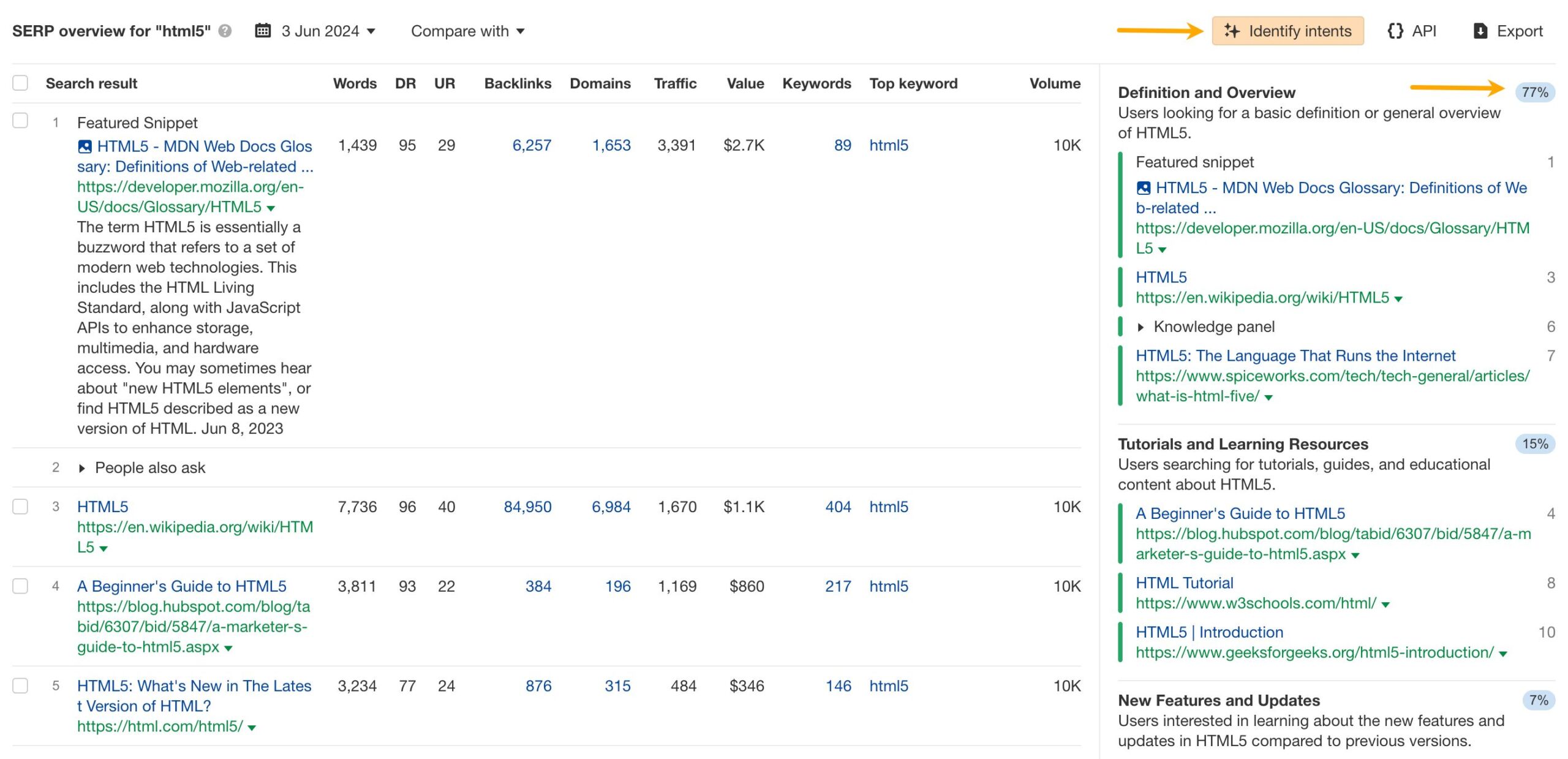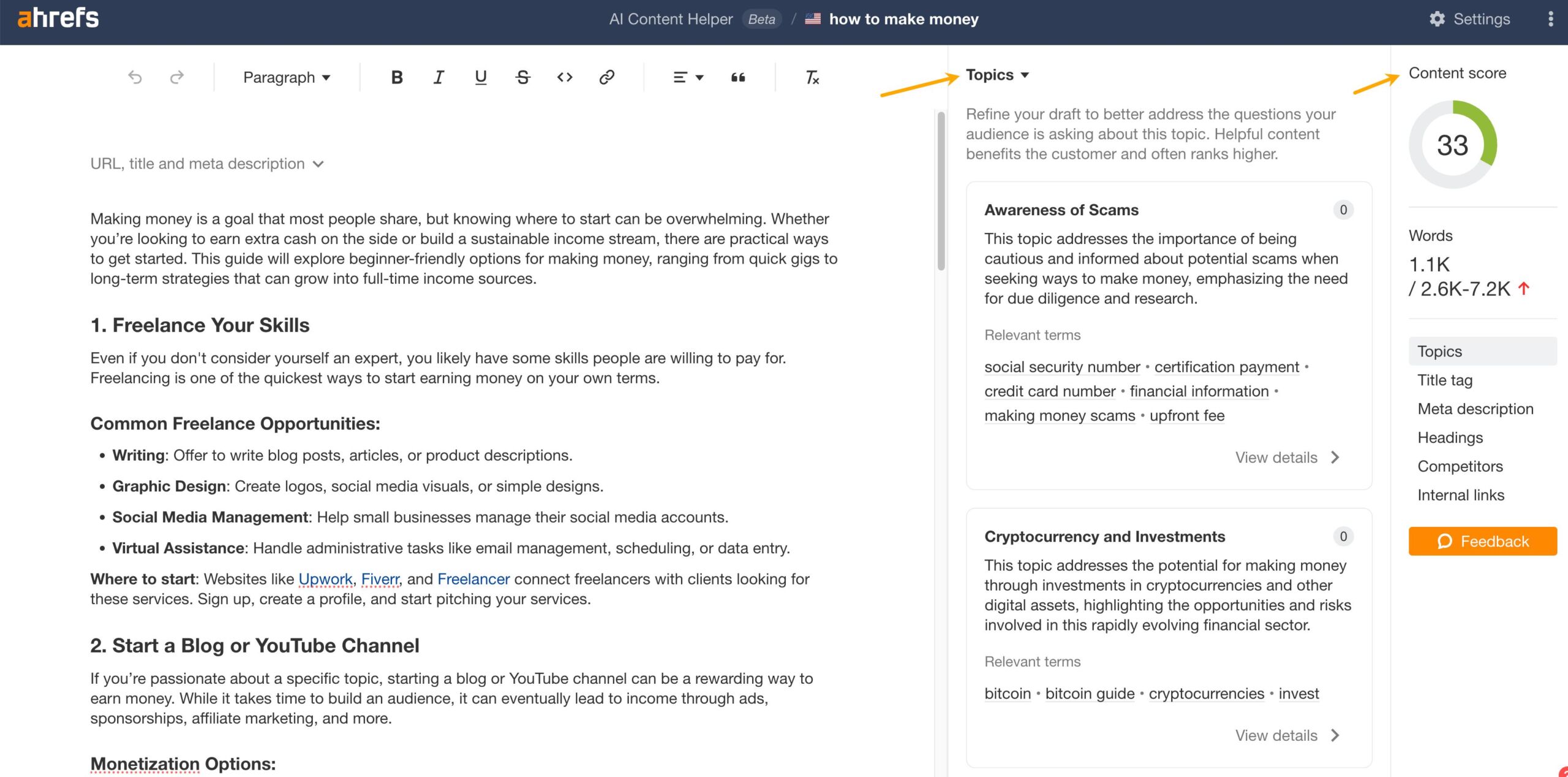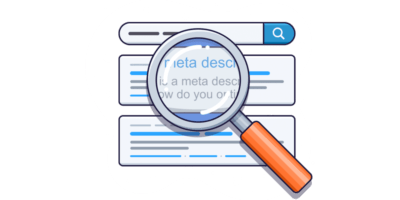In this guide, you’ll learn all you need to know about search intent and how to optimize your content to align with it.
Google prioritizes relevance in search results. So if you want to rank in Google, your content must be the most relevant result for the query. First and foremost, that means creating content that aligns with search intent of the target audience.
For example, if you search for “best suv,” you’ll find all the results are SUV rankings and reviews, not any particular car’s product page.

This is because Google knows the user intent is to learn first, and then potentially buy.
Optimizing for search intent can bring great results. We got 516% more traffic in less than six months by making a change to one of our landing pages.

The landing page wasn’t ranking well because it lacked a free tool functionality. To align it with searchers’ expectations for the “backlink checker” query, we needed to add that tool.

SEOs usually group keywords into one of four keyword search intent buckets:
- Informational intent — searchers are looking for information or an answer to a specific question.
- Commercial intent — searchers are comparing products or services before making a purchase decision.
- Transactional intent — searchers are ready to complete and action, often a purchase.
- Navigational intent — searchers are looking for a specific website.
These search intent categories, while broad, provide a useful starting point for content strategy. For example, when creating blog content, filtering for informational intent keywords in Ahrefs’ Keywords Explorer can help identify suitable topics quickly.

However, many keywords have multiple intents or fall between categories. For example, the query “best air fryer” is informational, transactional, and commercial at the same time. This is because, in the SERPs, you will find product reviews, recommendations, ads, and basic information about what air fryers are and what they’re good for.

Furthermore, the SERPs hold more information on what searchers actually want. You can learn:
- Do they want a blog post or video?
- Do they want a list of the best options, or a single recommendation and review?
- Do they value anything in particular when looking for recommendations?
This is why we came up with a new way to classify intent that will help you target keywords better.
Here are the steps:
For starters, you need to identify the three Cs of search intent for your target keyword and make sure your content is aligned with that. The three Cs are:
- Content type
- Content format
- Content angle
The idea here is that when creating content for search intent, it makes the most sense to follow the crowd. For instance, if most of the top pages are how-to guides, create a how-to guide. Of course, that doesn’t mean you have to copy them entirely.
Let’s run through this process in more detail.
1. Content type
This refers to the dominant “type” of content in the search results and is usually one of the following:
- Blog post
- Video
- Product page
- Category page
- Landing page
For example, take a look at the top search results for “best air fryer” in Ahrefs’ Keywords Explorer. Just by looking at the titles, we can see that the dominating content type is a blog post.

This means searchers don’t expect to see pages where air fryer manufacturers explain why their product is the best. They want the opinion of someone who has tested different options available on the market before they make the purchase.
Another way of determining dominating search intent is identifying the one with the most traffic share. You can do that automatically using the Identify intents feature (powered by AI) in Ahrefs’ Keywords Explorer.

2. Content format
This refers to the dominant “format” of the top-ranking pages. Typically, content format applies to blog posts.
Some common formats include these:
- “How-to” guides
- Step-by-step tutorials
- List posts
- Opinion pieces
- Reviews
- Comparisons
In our example of “best air fryer,” the dominating content format is list post—look at the titles:

This means searchers want a list of recommendations, not just a single recommendation or a single product review.
3. Content angle
The content angle refers to the specific focus or unique selling point that makes top-ranking posts and pages stand out. It shows what searchers find valuable when they make a particular search.
For example, when people search for “best air fryer,” the term “2023” often appears in the top-ranking titles. This indicates that searchers are looking for the most current recommendations. They want information on the best products available this year because new air fryers are constantly being released.

So, the dominating content angle for the “best air fryer” query is having up-to-date recommendations, which meets the searchers’ desire for the latest and best options.
To satisfy user search intent, you need to cover your topic in full. Including subtopics that searchers may expect is a great way to do that.
Below are three ways to find key subtopics.
1. Visit the top-ranking pages
Commonalities among top-ranking pages can give you clues on what searchers expect to see for any given topic.
For example, by visiting some top-ranking blog posts for “best air fryer,” we see they recommend the best products in their respective categories.
One of the common categories is a small air fryer ideal for one person.


The presence of different product categories is a hint that people may have different needs when it comes to this type of product. Therefore, it’s probably a good idea to include similar product categories in the content.
2. Run a content gap analysis at the page level
A content gap analysis is an easier, automated way of finding common subtopics and key points. It works by listing common keyword rankings for the analyzed pages.
For example, let’s do a content gap analysis for the keyword “best air fryer” in Ahrefs. To do this, we need to plug in the keyword in Ahrefs’ Keywords Explorer and open a few top-ranking pages with the same intent in the Content Gap report.

We’ll see a list of common search queries. Some of them will likely make great subheadings or points for our page. Here’s an excerpt from the content gap analysis:

So in a list post of best air fryers, some of the things you may want to include are these:
- Best budget option
- Best option based on capacity (small/large, quart capacity)
- Best smart air fryer
3. Use Ahrefs’ AI Content Helper
With Ahrefs’ AI Content Helper, you can streamline the process and fully automate it. It’s a unique tool because it uses AI to find the main topics (instead of keywords) for your keyword based on the top-ranking pages. As you write, it rates your content in real time based on those topics.

You can use it both for entirely new articles or updating existing content.

And since mixed SERPs happen quite often, the tool allows you to select the intent to optimize for.

Some SEOs use search volatility as a proxy for determining the clarity of search intent.
To assess search volatility, paste your keyword into Ahrefs’ Keywords Explorer, then scroll down to the SERP position history graph and set the filters to “Top 50” and “last 6 months.”

Keywords with little or no fluctuation in rankings over time are a good choice since they have clear search intent…

… whereas keywords with lots of fluctuation in rankings seem to be less “reliable” because the search intent changes frequently.

Final thoughts
Search intent is one of the most important ranking factors.
Fail to give searchers what they want, and your chances of ranking are slim to none.
We’ve seen this time and time again with the content we publish here on the Ahrefs Blog.
If you want to rank for the long term, understanding search intent is a must.
Make it your mission to give searchers what they want and Google (and likely other search engines) will almost certainly reward you for doing so.
Got questions or comments? Ping me on Twitter or Mastodon.




